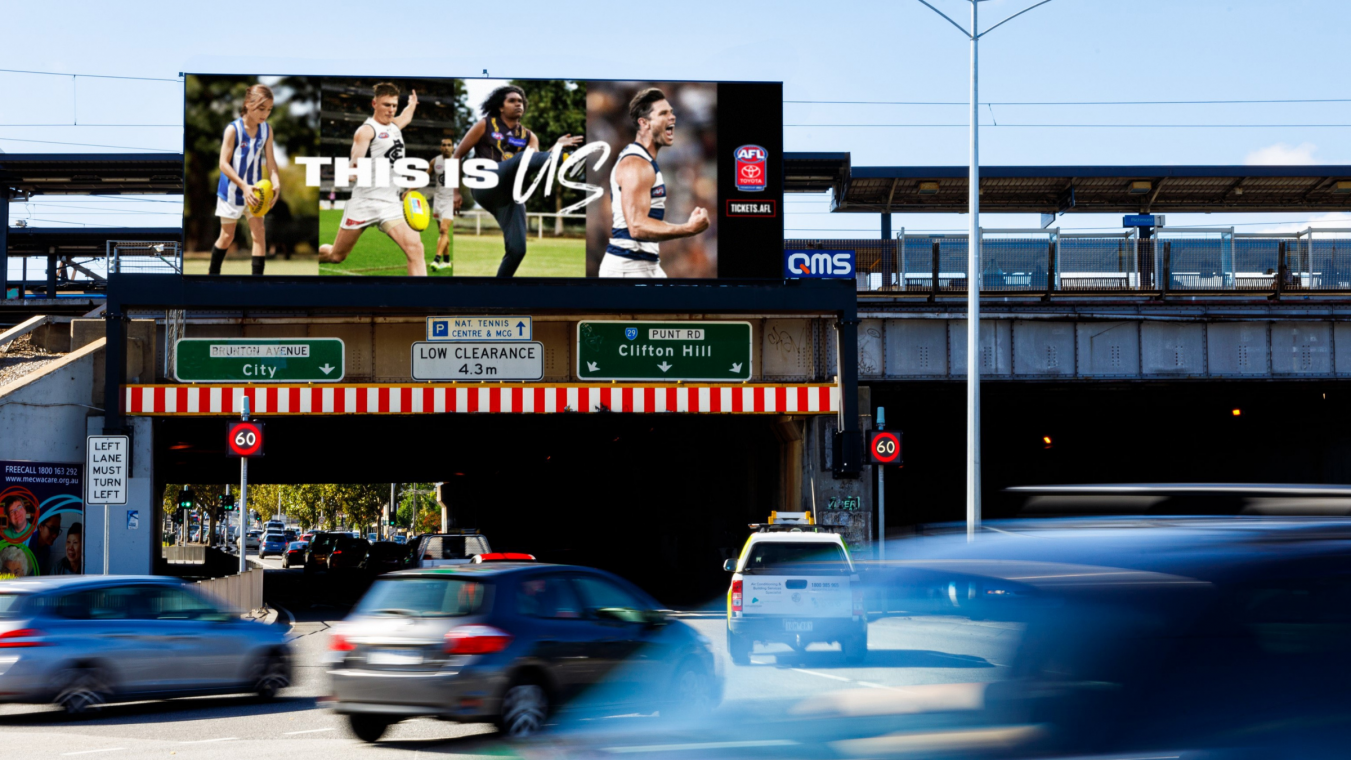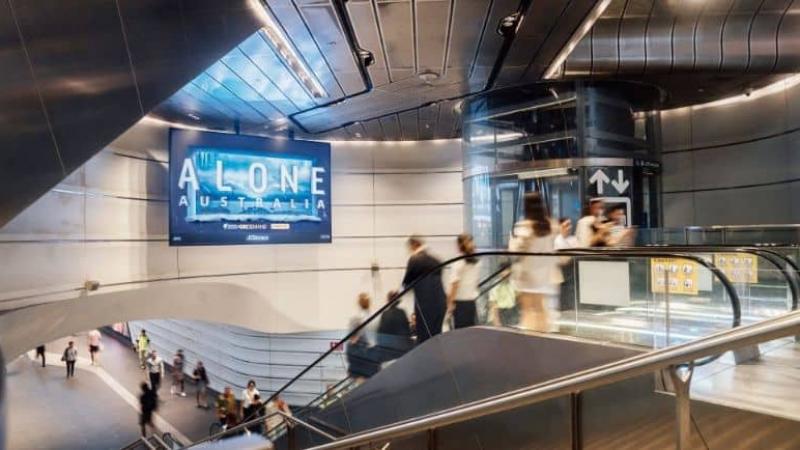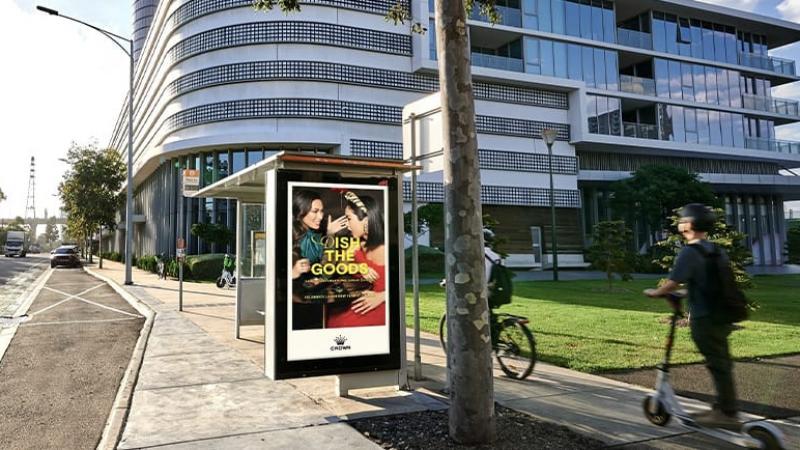
MOVE 2.0: Will Out of Home measurement’s biggest upgrade in 11 years be worth the wait?
It's been just over a decade since the Outdoor Media Association (OMA) launched its much-anticipated industry standard audience measurement tool for Out of Home (OOH), MOVE. Now, it's time to do it all over again.
MOVE – or Measurement Of Outdoor Visibility and Exposure – was five years in the making and finally delivered a detailed and reliable tool for static measurement. It assisted OOH to grow from $400 million in revenue at launch to almost a billion dollars in 2019, as well as to compete better for ad dollars as media buyers and planners could finally measure accurately the impact of campaigns.
But there was one significant feature missing – digital Out of Home (DOOH) measurement.
Now the industry is waiting again, this time for the launch of a project that promises to take accurate measurement of assets to the next level, including, finally, DOOH. MOVE 2.0 is set to be delivered in 2023.
In 2019 DOOH made up 55.8 per cent of the total net media revenue for the OOH industry ($935.5 million), and rose to 56.1 per cent of 2020 revenue ($566.5 million). MOVE 2.0 must make buying DOOH as easy, reliable and accurate as static if it is to continue the upward trajectory.
Traditionally, media buyers have favoured static OOH (your typical billboards, for example) because agencies and clients simply don’t trust DOOH measurement.
That leaves a significant gap for media planners and buyers, a gap that is holding the OOH industry back from achieving further growth as people moves back to more normal, pre-pandemic, movement patterns.
But can it wait until 2023?
Moving in on the opportunity
General manager of the OMA and MOVE, Kylie Green, admits that buyers and planners will have to navigate this "gap" for a while, but insists it will be worth the wait.
Global measurement exports Ipsos are now working with Veitch Lister Consulting (VLC) and the OMA through the testing phases to bring the system online in early 2023.
"The existing system that we’ve got is world-class, it’s a robust system and it’s certainly delivered what marketers have needed over the last decade. During that period, digital has picked up and it’s now over 50 per cent of revenue in the industry," she tells Mumbrella.
"So naturally with that, we do need to align audience measurement to provide that same transparency for campaigns and the proof behind that.
"In 2023 it will be delivering what they require. At the moment there is a slight gap with what we’ve got in the current audience measurement system. We are in conversation with the MFA about what a solution might look like in the meantime."
The gap has become enough of an issue that some of the larger outdoor companies have been making moves to measure their own DOOH more accurately. Just last week JCDecaux announced its own solution which will allow the provider to trade 100 per cent of its digital inventory programmatically.
But Green says the OMA will be able to provide much more for marketers with MOVE 2.0, which she hopes will become the new industry standard for measurement.
"It’s a currency for OOH, and that’s something that individual providers can’t offer. The different qualitative measures are out there, but we're representing all OOH, there’s no bias in the data," she says.
Ipsos senior research and technical director, Monika Jakubczak, says some of the in-house solutions are far from ideal, and reiterates the idea that individual companies are more likely to be biased with their data.
"Obviously there’s a lot of different types of mobility data that are available out there. Advertisers will be using that in different environments to buy inventory and target audiences. But these are different data sources and they’re not 100 per cent ideal. They’ve got gaps, they’re biased."
MOVE 2.0 will instead, "utilise multiple data sources and ensure that the system is as accurate as possible" for an industry-agreed upon system.
Jakubczak adds: "Having the OMA involved, a governing body across all the parties, all the stakeholders, we’re ensuring that the system delivers and everyone signs off on all the components that are going into it."
The buyers have their say
So what do media buyers and planners think of the current measurement system, and the role MOVE has played over the past decade?
Carat Australia chief investment officer, Craig Cooper, admits MOVE was previously a "world class, robust measurement system" when it launched, but now posits that it hasn’t been able to keep up with the digital evolution and fast-paced nature of the OOH industry.
"This has resulted in confusion around OOH measurement and thereby significant pressure on the OMA to upgrade this system to account for the change in buying formats," he tells Mumbrella.
"The key concern with MOVE was its inability to distinguish between static and digital panels, and therefore inaccurate reach figures if a campaign included DOOH.
"Given this, and excluding COVID-19's impact on OOH, we saw a skew of clients and agencies preference static panels – as the SOV (share of voice) could be guaranteed as 100 per cent, and the reach figures extracted from MOVE would be accurate."
Carat Australia chief investment officer Craig Cooper, Initiative national head of partnerships, Simon Reid
Initiative national head of partnerships, Simon Reid, adds that the current state of MOVE means OOH has "lost some relevance within agencies" given its inability to measure digital inventory.
"This has been an issue for some time and it’s now critical to find a solution given the continued digitisation across channels and entry of new formats and vendors."
Reid adds that the industry won’t be able to rely on media owner-supplied data in the meantime, but not necessarily for reasons of trust or accuracy. Rather, "it provides a one-dimensional view of a campaign given vendor-supplied data cannot be fused with another media partners data."
Enough to justify the wait?
The OMA says MOVE 2.0 will address many of the issues currently facing media buyers when purchasing OOH. To start with, it will measure all of Australia, as well as adding robust digital measurement.
"The glaringly obvious thing that MOVE doesn’t do is digital measurement," Green acknowledges. "We are opting to go with Ipsos and VLC because what we found through the research up until this point is that there wasn’t just a single solution.
"We needed multiple resources and data sources put into that system to really provide a robust, accurate audience measurement system for the Australian market."
Jakubczak adds that the new system will combine the "best of both worlds."
"Ipsos has a presence in many markets. We’ve got the technology that will enable data collection. We’ve got the technology that will enable us to store the inventory and deliver the audience figures. VLC has a very sound foundation in transport modelling in Australia. We are very happy to collaborate together in this project."
VLC national director of future transport, Ali Inayathusein, says his company will bring "understanding of travel mobility across Australia" to the project.
"I think for MOVE 2.0, what we’re excited to do is have an opportunity with Ipsos to really rethink the audience measurement system from the ground up."
Chair of the Move 2.0 delivery group, Adam Lang, brings extensive media and marketing industry experience, and reiterates the idea that the new system will very much be “evolution, not revolution.
"MOVE 2.0 will cope with how people are moving around the country, metropolitan, regional [and tell us] what inventory they’ve seen in terms of static, classic, digital, illuminated in a far more robust way.
"I’m really optimistic it’s going to be the best outdoor measurement system in the world by the time it gets launched in a couple of years’ time."
One of the other significant aspects that MOVE 2.0 will bring is measurement meters in environments like shopping centres. "MOVE 2.0 is not only about outdoor and road signs… [it] will include all the indoor locations, which is a big enhancement," Jakubczak explains.
"There are meters that will be deployed with multiple sensors that enable us to track people within indoor environments, even if we don’t have precise GPS signals.
"Data will not only come from the meters but from other data sources too. In terms of digital, we’ve done a lot of visibility adjustments for digital signs. We’ve done a lot of work to ensure that advertisers and media owners can create spot schedules for inventory."
The current verdict
Carat’s Cooper is largely positive when chatting with Mumbrella about the changes, and says he’s pleased that the OMA has engaged an independent global expert like Ipsos to help drive MOVE 2.0.
So what else is on his wish list for MOVE 2.0?
"A key area we would expect to see addressed in MOVE 2.0 would be to see the shift on running reach and frequency metrics move from the media vendors and placing this within the agencies – similar to all other media channels," he says.
"Having readily accessible planning data available to agencies and clients 24/7 would remove any potential barriers for supporting the OOH industry within client marketing plans. Another aspect to consider would be the flexibility of the system infrastructure, in particular user interface, and cloud-based management and storage."
For his part, Initiative’s Reid says he’d like to see upgrades to "the pace at which data can be refreshed/recalibrated based on audience shift’s and digital site conversions."
"The ability to input non-OMA member activity into MOVE so agencies / advertisers can form a complete picture and forecast audience delivery" is another aspect he’d like to see as part of MOVE 2.0.
Ultimately, Cooper is hopeful that the new system will help "future proof" OOH.
"The original MOVE system brought credibility and growth for OOH in Australia, and we hope that through true industry collaboration on MOVE 2.0, we can future proof the sector indefinitely."
Source: Mumbrella


